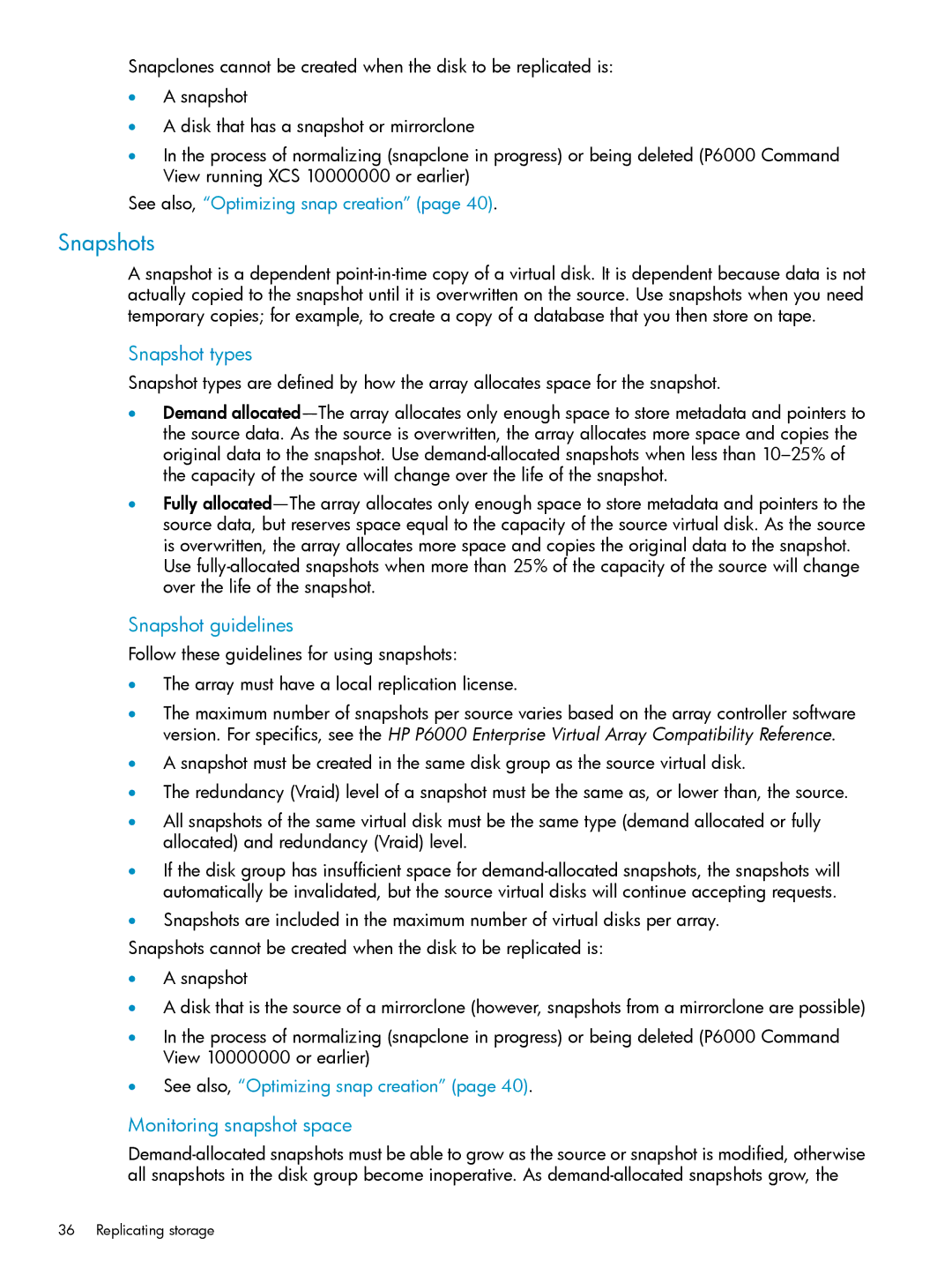Snapclones cannot be created when the disk to be replicated is:
•A snapshot
•A disk that has a snapshot or mirrorclone
•In the process of normalizing (snapclone in progress) or being deleted (P6000 Command View running XCS 10000000 or earlier)
See also, “Optimizing snap creation” (page 40).
Snapshots
A snapshot is a dependent
Snapshot types
Snapshot types are defined by how the array allocates space for the snapshot.
•Demand
•Fully
Use
Snapshot guidelines
Follow these guidelines for using snapshots:
•The array must have a local replication license.
•The maximum number of snapshots per source varies based on the array controller software version. For specifics, see the HP P6000 Enterprise Virtual Array Compatibility Reference.
•A snapshot must be created in the same disk group as the source virtual disk.
•The redundancy (Vraid) level of a snapshot must be the same as, or lower than, the source.
•All snapshots of the same virtual disk must be the same type (demand allocated or fully allocated) and redundancy (Vraid) level.
•If the disk group has insufficient space for
•Snapshots are included in the maximum number of virtual disks per array.
Snapshots cannot be created when the disk to be replicated is:
•A snapshot
•A disk that is the source of a mirrorclone (however, snapshots from a mirrorclone are possible)
•In the process of normalizing (snapclone in progress) or being deleted (P6000 Command View 10000000 or earlier)
•See also, “Optimizing snap creation” (page 40).
Monitoring snapshot space
36 Replicating storage
